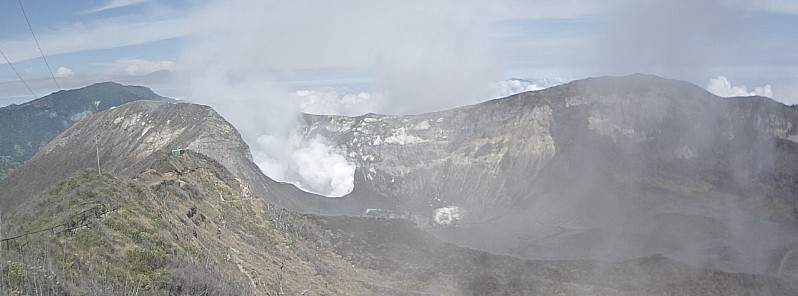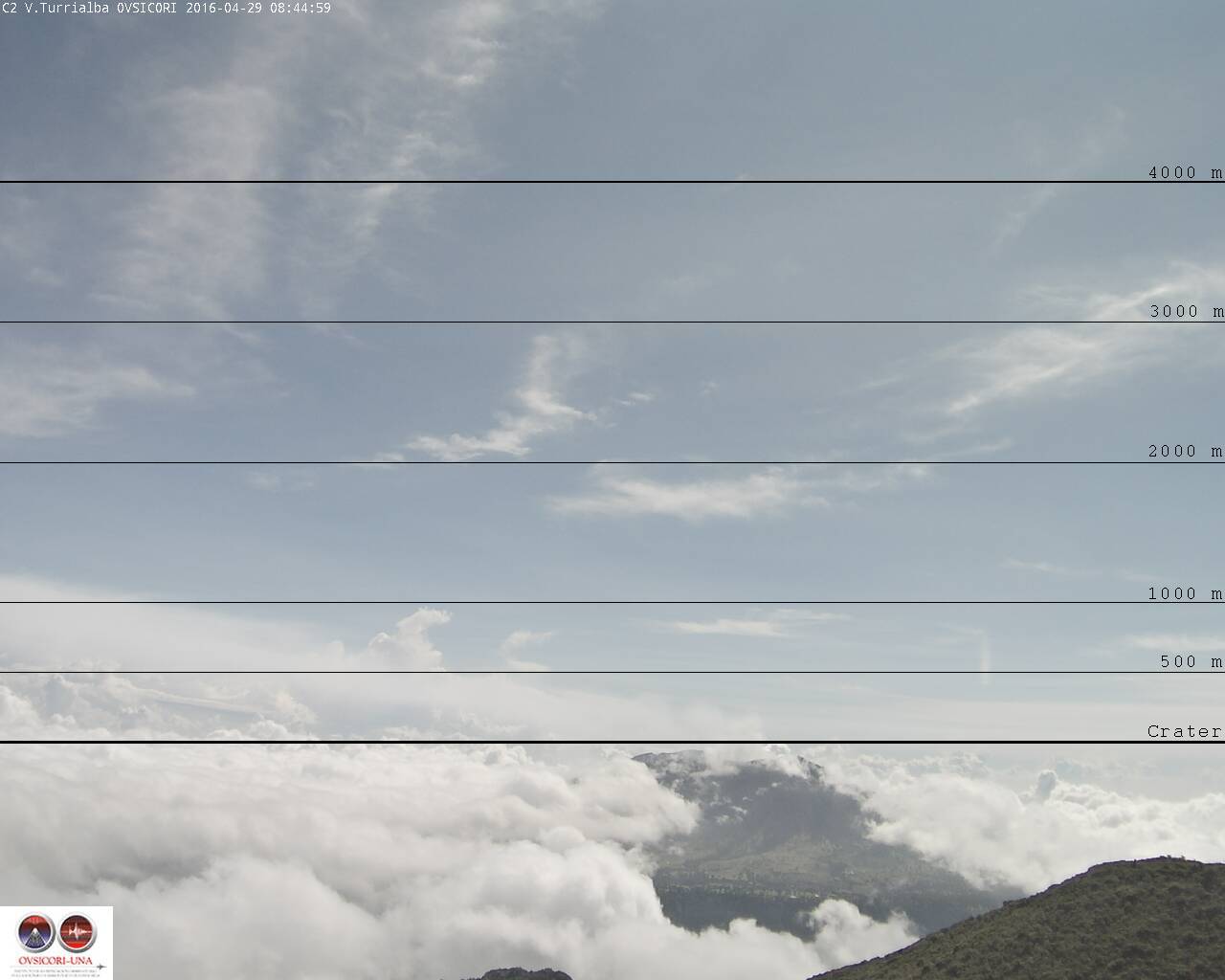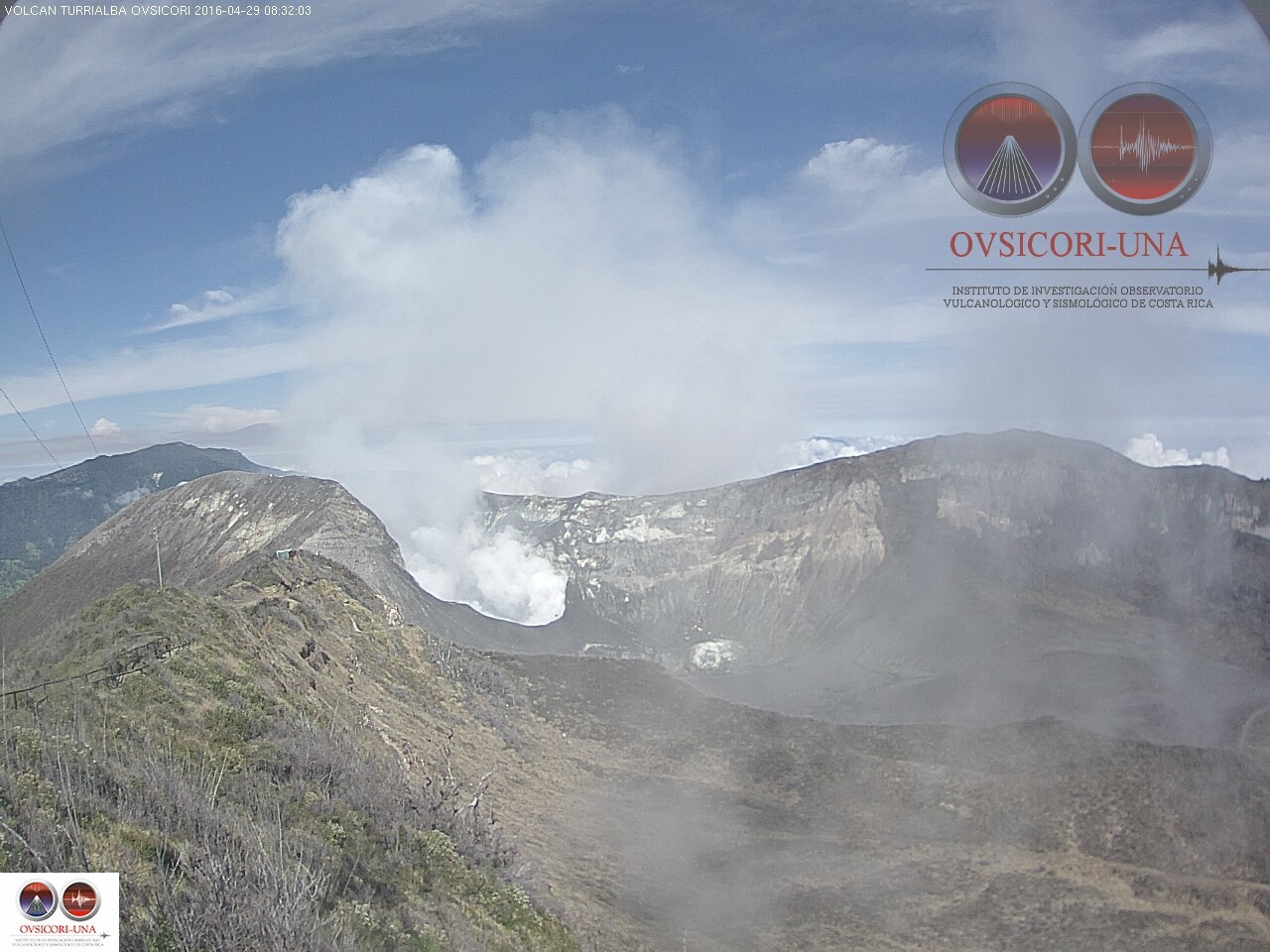Increased seismic activity under Turrialba volcano, Costa Rica

The Volcanological and Seismological Observatory of Costa Rica (OVSICORI-UNA) reported that the seismic activity at the Turrialba volcano has increased on April 28, 2016.
The Observatory recalled that last Saturday, April 23, nearly 75 earthquakes took place in less than 12 hours between the Irazu and Turrialba volcanoes.
The National Seismological Network said normal steam and gas plumes are rising from the volcano at this time.
OVSICORI-UNA reported that at 08:59 local time on April 3 an explosion at Turrialba lasting less than one minute generated an ash-and-gas plume that rose about 100 m (330 feet) and drifted S and SW. A small amount of ash and a sulfur odor was reported in area 2 km (1.2 miles) NW of the volcano.
At 12:40 local time on February 5, passive gas-and-ash emissions rose from the volcano but foggy conditions prevented estimates of ash-cloud height and drift direction, although the plume likely drifted SW. Residents of La Silvia, 2 km NW, reported a sulfur odor and ashfall.
For a period of 15 minutes, starting at 13:50 on February 6, passive gas-and-ash emissions rose about 500 m (1 640 feet) above West Crater and drifted NW. According to the Washington VAAC the webcam recorded gray emissions on February 8.

Turrialba on April 29, 2016. Image credit: OVSICORI-UNA

Turrialba on April 29, 2016. Image credit: OVSICORI-UNA
OVSICORI has two high-quality web cameras installed on Turrialba: camera 1, camera 2.
Geological summary
Turrialba, the easternmost of Costa Rica's Holocene volcanoes, is a large vegetated basaltic-to-dacitic stratovolcano located across a broad saddle NE of Irazú volcano overlooking the city of Cartago. The massive 3340-m-high Turrialba is exceeded in height only by Irazú, covers an area of 500 sq km, and is one of Costa Rica's most voluminous volcanoes.
Three well-defined craters occur at the upper SW end of a broad 800 x 2200 m summit depression that is breached to the NE. Most activity originated from the summit vent complex, but two pyroclastic cones are located on the SW flank. Five major explosive eruptions have occurred during the past 3500 years. A series of explosive eruptions during the 19th century were sometimes accompanied by pyroclastic flows. Fumarolic activity continues at the central and SW summit craters. (GVP)
Featured image: Turrialba on April 29, 2016. Credit: OVSICORI-UNA

Commenting rules and guidelines
We value the thoughts and opinions of our readers and welcome healthy discussions on our website. In order to maintain a respectful and positive community, we ask that all commenters follow these rules.